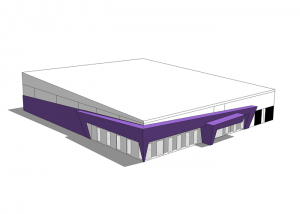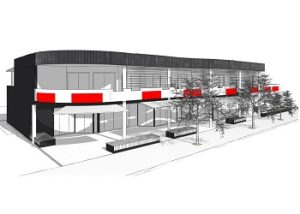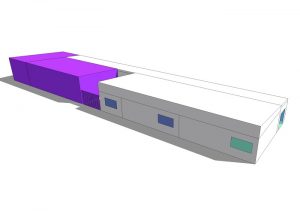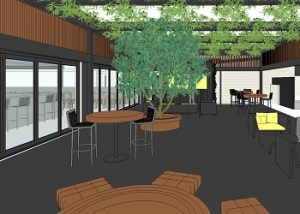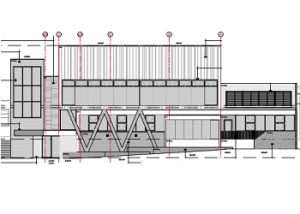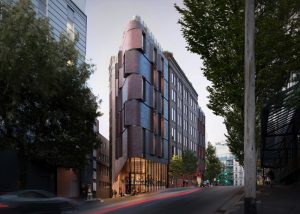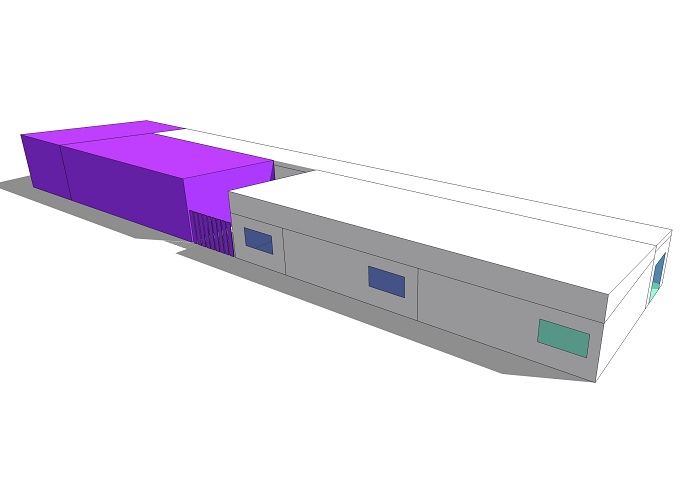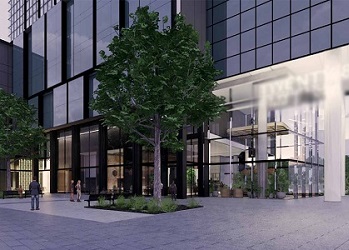JV3 Performance Solution
When the rigid (yet low cost) Deemed to Satisfy provisions looks costly, our clients seek compliance using Energy Performance Solutions such as JV3 Modelling (i.e. Verification Method/Alternative method). If professionally performed, JV3 Performance Solution allows for applying any change to the energy performance while reducing the construction cost, such as replacing a double-glazed window with a single glazed while reducing the energy demand. Find out more here:

JV3 Performance Solution
When the rigid (yet low cost) Deemed to Satisfy provisions looks costly, our clients seek compliance using Energy Performance Solutions such as JV3 Modelling (i.e. Verification Method/Alternative method). If professionally performed, JV3 Performance Solution allows for applying any change to the energy performance while reducing the construction cost, such as replacing a double-glazed window with a single glazed while reducing the energy demand.
Find out more:
- What is the energy Performance Solution?
- What are the advantages of JV3 modelling?
- Building classes that can benefit from the JV3 method
- Energy Compliance service guarantee and past experience

At Energy Compliance, we offer all avenues to demonstrate your building compliance under any conditions.

Quality
We perform more iterations to reduce your construction costs.
We illustrate the added insulation to minimize any mistake during the construction stage.

Quality
We perform more iterations to reduce your construction costs.
We illustrate the added insulation to minimize any mistake during the construction stage.
Service Guarantee
If we can’t reduce your construction cost by more than our fee, we’ll only charge our 40% deposit. This is the best proof of how cost-efficient our performance-based solutions are. You won’t get this anywhere else!


Service Guarantee
If we can’t reduce your construction cost by more than our fee, we’ll only charge our 40% deposit. This is the best proof of how cost-efficient our performance-based solutions are. You won’t get this anywhere else!

Quick Turnaround
Quotations: Same business day of inquiry.
JV3 Performance Solution reports: 5-10 business days.

Quick Turnaround
Quotations: Same business day of inquiry.
JV3 Performance Solution reports: 5-10 business days.
WHAT IS ENERGY PERFORMANCE SOLUTION?
The National Construction Code (NCC) offers prescriptive and standard construction/glazing levels to comply with the code. However, the NCC is flexible and allows using any construction/glazing other than the prescriptive constructions (i.e. Deemed to Satisfy methods), if we justify that the new construction technique has a performance that is as good as the prescriptive method. The process that justifies an alternative (cheaper) construction instead of NCC prescriptive construction is called Performance Solution.
For instance, NCC requires your building to have minimum double glazing with a U-value of 2.0 to comply with the code. However, we can provide a Performance Solution that adds 15% more insulation to the roof or use shading devices (low-cost construction methods) to justify the implementation of a single glazed window instead (i.e. save your construction costs).
The Performance Solution JV3 modelling is a compliance approach that requires simulation of the proposed building using computer modelling software on an hourly basis. For energy performance solution, NCC sets the boundaries for computer energy modelling in its Section JV3 and calls it “Verification Using a Reference Building”. Architects and people in the energy efficiency industry also call performance solution as “Alternative method” or “JV3 modelling” method. All these refer to the same energy Performance Solution which is modelling an alternative compliance method to a rigid Deemed to Satisfy (DTS) prescriptive method.
WHAT IS ENERGY PERFORMANCE SOLUTION?
The National Construction Code (NCC) offers prescriptive and standard construction/glazing levels to comply with the code. However, the NCC is flexible and allows using any construction/glazing other than the prescriptive constructions (i.e. Deemed to Satisfy methods), if we justify that the new construction technique has a performance that is as good as the prescriptive method. The process that justifies an alternative (cheaper) construction instead of NCC prescriptive construction is called Performance Solution.
For instance, NCC requires your building to have minimum double glazing with a U-value of 2.0 to comply with the code. However, we can provide a Performance Solution that adds 15% more insulation to the roof or use shading devices (low-cost construction methods) to justify the implementation of a single glazed window instead (i.e. save your construction costs).
The Performance Solution JV3 modelling is a compliance approach that requires simulation of the proposed building using computer modelling software on an hourly basis. For energy performance solution, NCC sets the boundaries for computer energy modelling in its Section JV3 and calls it “Verification Using a Reference Building”. Architects and people in the energy efficiency industry also call performance solution as “Alternative method” or “JV3 modelling” method. All these refer to the same energy Performance Solution which is modelling an alternative compliance method to a rigid Deemed to Satisfy (DTS) prescriptive method.
The Performance Solution JV3 modelling is a compliance approach that requires simulation of the Proposed Building using computer modelling software on an hourly basis. For energy Performance Solution, NCC sets the boundaries for computer energy modelling in its Section JV3 and calls it “Verification Using a Reference Building”. Architects and people in the energy efficiency industry also call performance solution as “Alternative method” or “JV3 modelling” method.
The Alternative Method or JV3 compliance path is simple and works all the time when the Deemed to Satisfy approach provides an undesirable solution or doesn’t meet the client’s requirements.
This alternative method compares the thermal performance of the Proposed Building with proposed insulation, glazing and services with the NCC Reference Building. The Reference Building has the same geometry as the Proposed Building but with insulation, glazing and services prescriptive of NCC Deemed to Satisfy solution. The outcome is simple – pass or fail! To pass the energy efficiency requirement test, annual energy consumption or greenhouse gas emissions from the Proposed Building must be equal to or less than that of the NCC Reference Building.

ADVANTAGES OF PERFORMANCE SOLUTION (JV3 MODELLING)
- Provides Energy Compliance to the NCC in a more flexible manner.
- A proven method of reducing construction costs.
- Allows replacing high-cost energy-saving measures with low-cost options (e.g. single-glazed windows instead of double glazed).
- Has no limitation in applying customised building materials and glazing options.
- Allows offsetting the building energy demand with the use of onsite renewable solar systems (electricity or solar hot water).
- Allows offsetting the use of low-cost HVAC solutions with other low-cost energy efficiency measures.
- Your HVAC engineer can use the estimated hour-by-hour energy demand from different building zones to perform a preliminary design and hourly feasibility assessment of different energy system options.
- Reduce/increase insulation in some areas of the building and offset it by a change in insulation somewhere else in the building fabric.
- Increase/reduce the amount of light you receive inside the building by adjusting the SHGC factor of your glazing to your desired value.
- Reach to higher levels of artificial lighting power density than what NCC allows.
- Assure that we achieve thermal comfort in all occupied zones according to the definitions in ASHRAE 55 and NCC regulations.
While the Deemed to Satisfy method is low cost and quite fast to obtain, it doesn’t consider:
- Thermal interaction between building fabric components.
- Shading effect because of the adjoining structures and features (which offsets cooling demand).
- Effect of thermal mass in heat storage or discharge.
- Effect of internal heat gains from sources like lighting, occupancy and appliances (which offsets heating demand)
- Effect of walls or roofs surface colours in offsetting heating and cooling demand.
It, therefore, doesn’t result in the most cost-effective solution all the time. Solutions under DTS can be prohibitively expensive to install.
The JV3 method, on the other hand, utilises holistic modelling of the entire building, and our team at Energy Compliance, with no exception to date, have always satisfied our valued client’s construction cost reduction requirements.
ADVANTAGES OF PERFORMANCE SOLUTION (JV3 MODELLING)
- Provides Energy Compliance to the NCC in a more flexible manner.
- A proven method of reducing construction costs.
- Allows replacing high-cost energy-saving measures with low-cost options (e.g. single-glazed windows instead of double glazed).
- Has no limitation in applying customised building materials and glazing options.
- Allows offsetting the building energy demand with the use of onsite renewable solar systems (electricity or solar hot water).
- Allows offsetting the use of low-cost HVAC solutions with other low-cost energy efficiency measures.
- Your HVAC engineer can use the estimated hour-by-hour energy demand from different building zones to perform a preliminary design and hourly feasibility assessment of different energy system options.
- Reduce/increase insulation in some areas of the building and offset it by a change in insulation somewhere else in the building fabric.
- Increase/reduce the amount of light you receive inside the building by adjusting the SHGC factor of your glazing to your desired value.
- Reach to higher levels of artificial lighting power density than what NCC allows.
- Assure that we achieve thermal comfort in all occupied zones according to the definitions in ASHRAE 55 and NCC regulations.
While the Deemed to Satisfy method is low cost and quite fast to obtain, it doesn’t consider:
- Thermal interaction between building fabric components.
- Shading effect because of the adjoining structures and features (which offsets cooling demand).
- Effect of thermal mass in heat storage or discharge.
- Effect of internal heat gains from sources like lighting, occupancy and appliances (which offsets heating demand)
- Effect of walls or roofs surface colours in offsetting heating and cooling demand.
It therefore doesn’t result in the most cost effective solution all the time. Solutions under DTS can be prohibitively expensive to install.
The JV3 method, on the other hand, utilises holistic modelling of the entire building, and our team at Energy Compliance, with no exception to date, have always satisfied our valued client’s construction cost reduction requirements.
Feel free to discover our past experience
First, we model the building under the prescriptive Deemed to Satisfy (DTS) provisions to calculate the energy demand from a standard “NCC reference building”.
Second, we model the building, with all its details as per your wish list, keeping in mind to minimize the construction costs. We call this model “the proposed building”.
Third, we compare the heating and cooling loads and greenhouse gas emissions of the reference building to that of the proposed building. If the Proposed Building generates less greenhouse gas emissions than the Reference Building, then the Proposed Building passes the NCC energy efficiency test.
Finally, we issue a performance Solution that any building surveyor or any local council in Australia identifies as a valid alternative solution.
The performance Solution or JV3 approach provides flexibility and construction cost reduction. For instance, with 15% increased roof insulation (which is low cost to implement), we may be able to minimize the glazing costs. Note that, with this solution, the building also requires less heating and cooling compared with the NCC prescriptive method.
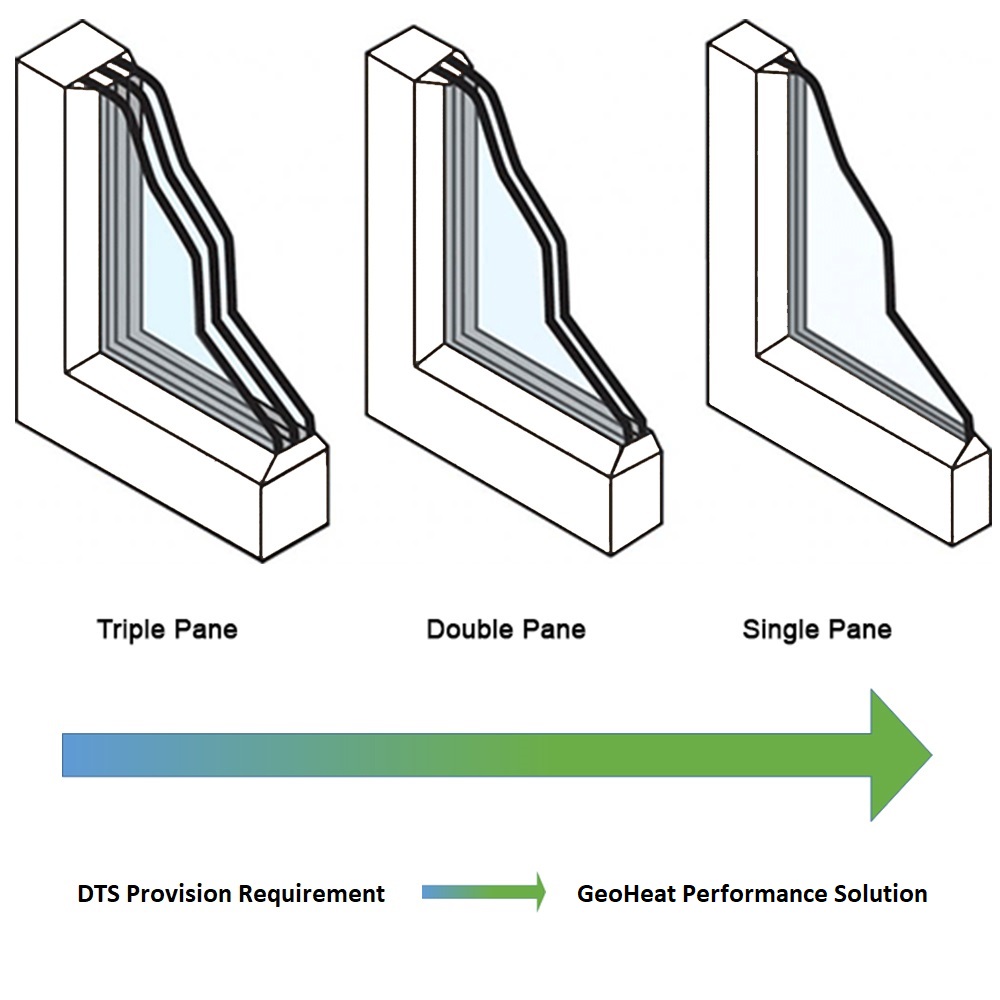
REGULATION AROUND JV3 MODELLING & PERFORMANCE SOLUTIONS
National Construction Code (NCC) regulates the JV3 Performance Solution to stop cowboys in the energy efficiency industry from abusing the provisions for flexibility and cost reduction. JV3 regulations require using:
- A validated software under ASHRAE 140 standard,
- Hour-by-hour accurate modelling approach,
- Able to implement NCC prescriptive schedules of operations, temperature set points.
At Energy Compliance, we use DesignBuilder software that satisfies all the above requirements and eventually allows modelling the building in 3D, assessing the air conditioning and heating system performance, CFD and daylighting.
Building classes that can benefit from the JV3 method
The JV3 alternative method or Performance Solution applies to all commercial buildings (Class 3, Class 5, Class 6, Class 7, Class 8, Class 9 and common area of Class 2 buildings). Apartments (Class 2 buildings) and the residential components of commercial buildings (Class 4) are assessed under NatHERS. Residential detached homes (Class 1) and sheds/garages (class 10) buildings can benefit from the Performance Solution under Volume 2 of the National Construction Code, referred to as “Verification Using a Reference Building” or VURB method.
| BCA Class |
Type of Classification |
JV3 |
VURB Performance Solution |
|---|---|---|---|
| 1a | Residential dwelling | X | ✔ |
| 1b | Boarding house/guest house | X | ✔ |
| 2 | Apartments | X | X |
| 2 | Common areas | ✔ | X |
| 3 | Residential part of a hotel | ✔ | X |
| 4 | Dwelling in a commercial building | X | X |
| 5 | Office | ✔ | X |
| 6 | Shop | ✔ | X |
| 6 | Restaurant/café | ✔ | X |
| 7a | Carpark | ✔ | X |
| 7b | Storage/warehouse | ✔ | X |
| 8 | Laboratory/factory | ✔ | X |
| 9a | Clinic | ✔ | X |
| 9a | Ward area | ✔ | X |
| 9b | Theatre/cinema | ✔ | X |
| 9b | Conference | ✔ | X |
| 9b | School | ✔ | X |
| 9c | Aged-care facility | ✔ | X |
| 10a | Garage/shed | X | ✔ |

JV3 Modelling Tools
JV3 modelling is like NatHERS modelling, yet with far more capabilities. The software used for the JV3 alternative method or the energy Performance Solution should be capable of hourly energy modelling of a building and should comply with the ABCB’s set of regulations.
At Energy Compliance we model buildings with DesignBuilder modelling software. This robust energy modelling software complies with all the requirements in NCC energy Performance Solution clauses. For commercial buildings, it complies with the ABCB Protocol for Building Energy Analysis Software (Version 2006.1). Referring to Clause 3 of the ABCB protocol for building energy analysis software; DesignBuilder software:
Is commercially available in Australia;
Is based on a simulation program using an hourly climate data file;
Is capable of computing the annual energy consumption of a building under the Verification methods of the NCC;
Can geometrically describe the building in 3D, which accounts for the surface azimuth, tilt angles and adjacent structures and features;
Provides the results comparable to other similar software under ASHRAE Standard 140, Standard Method of Test for the Evaluation of Building Energy Analysis Computer programs using International Energy Agency BESTEST,
Satisfies all the specific capabilities in Clause 4 of the ABCB protocol for building energy analysis software.
Has a calculation method that complies with ANSI/ASHRAE Standard 140 and can assess the heating load and cooling load by modelling:
(i) The building fabric; and
(ii) Glazing and shading; and
(iii) Air infiltration and ventilation; and
(iv) The function and use of the building, including zoning, hours of occupation, hours of heating and cooling availability and internal heat gains; and
(v) Relevant built-environment and topographical features; and
(vi) The sensible heat component of the cooling load and heating load.
DesignBuilder can use climatic data in the calculation that is based on hourly recorded values and represents a typical year for the proposed location.
For more information about DesignBuilder ASHRAE Standard 140-2017 compliance, please refer to: https://designbuilder.co.uk/download/documents.
WHAT ENERGY COMPLIANCE OFFERS
Glazing can be a significant construction cost component, and how the National Construction Code (NCC) handles glazing often makes it much more expensive than necessary.
This unnecessary cost is due to the rigid and incompatible energy assessment method for glazing in buildings under the Deemed to Satisfy (DtS) provisions, wherein glazing is assessed in isolation to the rest of the building fabric (other than external walls). Fortunately, the NCC allows an alternative solution for energy efficiency compliance assessment, called JV3.
The JV3 assessment method provides the ability to model glazing and all other building components as a system. So, for example, specifying a lower thermal performance window can be offset by increasing the amount of insulation in the roof space.

WHAT ENERGY COMPLIANCE OFFERS
Glazing can be a significant construction cost component, and how the National Construction Code (NCC) handles glazing often makes it much more expensive than necessary.
This unnecessary cost is due to the rigid and incompatible energy assessment method for glazing in buildings under the Deemed to Satisfy (DtS) provisions, wherein glazing is assessed in isolation to the rest of the building fabric (other than external walls). Fortunately, the NCC allows an alternative solution for energy efficiency compliance assessment, called JV3.
The JV3 assessment method provides the ability to model glazing and all other building components as a system. So, for example, specifying a lower thermal performance window can be offset by increasing the amount of insulation in the roof space.

About our modelling capabilities for the JV3 report
At Energy Compliance we use DesignBuilder hour by hour building thermal modelling software analysis. Our JV3 modelling software present prominent features and capabilities compared to its rival software. These features include:
- Graphic visualisation, which allows to model to the utmost accuracy. This feature involves a graphical presentation of the building construction and glazing and their applied location in the model. When modelling natural ventilation, we can track and visually check the airflows through internal and external openings. Models can now be accurately rotated on the land/site. We can also export or import to/from Revit 2019.
In summary, we calculate with EnergyPlus and visualize with the Autodesk Revit!
- Simulation – we can:
- Model thermal mass though PCMs (Phase Change Materials).
- We can run simulations for several years.
- For the first year calculation, simulation software warms up the slab before the beginning to simulate!
- Viewer mode allows viewing and customizing the building thermal results into grids, histograms and figures. Finally, we can now check your heating and cooling system design results in a detailed manner, down to the very last wall and window!
- Daylighting option in our modelling software allows us:
- To calculate daylight credits for schemes such as Green Star certification schemes.
- To generate contour plots of daylight to illustrate availability and glare within each zone through the whole building.
- To show summary daylight performance in a tabular report.
- To simulate multi-zone daylighting, including light transmission through exterior and interior windows and reflection from all surfaces.
- Heating, Ventilation and Cooling (HVAC) is part of our modelling software and allows us to:
- Simultaneously simulate the building 3D models and heating and cooling system to accurately consider the dynamic interaction between the building envelope and building services (i.e. heating and cooling and ventilation).
- Use the extensible library of components including boilers, chillers, heating coils, heat pumps, cooling coils, pumps, fans, humidifiers, set-point managers, etc.
- Include all ten options from ASHRAE 90.1 baseline HVAC system types,
- Zone groups allow grouping multiple zones that have similar system types together and simplify the HVAC diagram layout and speed data entry.
- The energy model can generate node temperatures, flow rates and humidity levels at sub-hourly intervals.
- For air distribution, we can use cooled beams, direct air, dual duct CAV, dual duct VAV, single duct CAV reheat, single duct VAV with/without reheat, single duct VAV reheat with variable speed fan.
- Energy model software considers radiant heat distribution (water pipes buried in surface layers) such as chilled ceilings and heated floors.
- We can implement CHP (combined heat and power) generation and Tri-generation (combined generators with absorption chiller) and ice thermal storage in the overall energy modelling.
- We can all add variable speed fan cooling towers in detailed HVAC modelling.
- Uncertainty and sensitivity reports.
- We can analyze the uncertainty and the degree of freedom in models and decide! While a “probabilistic” factor kicks in, there is no better way to find out how influential this is to the complete modelling procedure. We can calculate Multivariate linear regression for each output variable in our sensitivity analysis if required by our clients.
- This is one of the most important parts of our service. We can assess different windows U value and SHGC and any other custom variables in three types for parametric analysis and additional outputs as an objective in optimization simulations. Model rotation is available as a variable alongside the previously existed site rotation variable.
FAQ
JV3 method is a pathway to energy compliance with way more flexibility compared to the rigid Section J DTS pathway. JV3 assessment is a comprehensive modelling approach that covers the building fabric (roof/ceiling, walls and floors), external glazing and services (space heating and cooling equipment, solar PV …) in a single model (i.e. proposed model). This model is then compared to a same model having building fabric and services as required by Section J DTS provisions. If the proposed model emits less carbon emissions than the reference model, then the proposed building achieves energy compliance. This method allows installing single glazed windows instead of complying double-glazed, add no insulation to the walls or keep a low-performing gas boiler, by offsetting the energy loss via better insulation elsewhere or installing solar PV, etc. (which is not possible under DTS pathway)
Yes. You can use low cost single glazed windows or any building construction material and then offset the higher energy demand of the building with the use of more efficient building services, use of renewables, or by improving building fabric somewhere else. The great advantage of JV3 method is that it evaluates the whole building and its services as a single system and allows tradeoffs inside this system.
Under simplified DTS approach, National Construction Code (NCC) prescribes glazing or level of insulation that may be expensive to install as it is assessed in isolation with the other parts of building fabric or services.
A JV3 assessment requires a 3D modelling of the project and input of various parameters as well as undertaking multiple modelling iterations to achieve compliance. Generally, our assessments take 5 to 7 workdays more than the DTS compliance pathway. However, construction cost reduction as a result of JV3 assessment is way more than the assessor’s fee in almost all cases.
The final cost of a JV3 report depends on the complexity of a building and varies for each project. You can have a quote and we will get back to you with your project’s cost in a single working day.
Here at Energy Compliance Consultants, we deliver our JV3 reports between 4 to 9 working days, depending on the project’s complexity.
Yes. using JV3 assessment, Commercial buildings can benefit from onsite renewable energy generation (such as solar PV or solar hot water) to offset the high energy demand of the building, due to the lack of insulation, use of low-cost windows or inefficient services.
You can read more on that here.
Generally, yes you can. But to answer in details, this depends on the degree of alteration or addition. If the volume of alteration is less than 50% of the volume of the existing building or the area of the extension is less than 25% of the existing building, it is very unlikely that you need JV3 modelling to determine compliance for the new works. In these cases, a simple Section J DTS report is proffered. However, if the degree of alteration and extension is more than that, and relevant building surveyor may demand full compliance instead of partial compliance. In these cases, JV3 is your last resort to keep the existing building from the new works or to replace some old windows, instead of all.
Under NCC 2019, common area of Class 2 buildings, Class 3, Class 5, Class 6, Class 7, Class 8 and Class 9 buildings can use JV3 alternative solution for energy compliance.
Under NCC 2022 (with a transition period from 1 May to 1 October 2023 in Victoria), Class 2 buildings are also able to use JV3 method to achieve a cost-effective compliance
Under NCC 2019 it is not possible to use JV3 for Class 2 (apartment) buildings. However, under NCC 2022 (will be adopted from May 2023 in Victoria), apartment buildings can also use JV3 to achieve compliance under NCC Vol 1.0, Section J requirements.
VURB and JV3 are both verification methods of compliance with the energy efficiency requirements of NCC and are basically the same methods. VURB is an alternative solution to achieve compliance under NCC Vol 2.0 Part 3.12 for Class 1 and Class 10 buildings; however, JV3 is an alternative solution to achieve compliance under NCC Vol 1.0 Section J for common parts of Class 2, Class 3 to Class 9 buildings.
Though the differences between a JV2 and JV3 are minor (refer here), JV2 (Green Star) Performance Solution requires the proposed building to generate 90% or less greenhouse gas emissions than the reference building. However, for JV3 assessment, NCC demands just a small reduction and could be as little as 0.5%. Greenhouse gas emission reduction of 10% as required under JV2 would be more expensive to achieve. We recommend JV3 performance solution for compliance with NCC and JV2 method for the projects that require a Green Star rating.
To undertake a JV3 assessment, you need to model your building in a 3D manner. After that, you must introduce your building fabric and shading features to the model and implement specific modelling parameters. These parameters and profiles for a JV3 assessment are detailed in NCC Vol 1.0, Section J, Specification JVb and Specification JVc. ESD consultant is not able to change these parameters but can offer more realistic hourly profiles for the operation and services used in the proposed building. Also, JV3 assessment demands a thermal comfort modelling and you must claim that your proposed solution doesn’t affect the occupant’s comfort in the building.
No, a good passive building design uses less energy and allows for greater savings in the energy demand of the building services. However, as both reference building and proposed building models in a JV3 assessment must use the same building design, the improved passive design also applies to the reference building. JV3 assessment in its current form, mainly benefits from the use of efficient services like high-efficiency chiller, heat pump, condensing gas water heaters or the use of renewables for the proposed building, instead of innovative passive design solutions.
Using JV3 verification method, the proposed building achieves compliance if it emits less greenhouse gas emissions than the reference building that follows NCC Section J DTS provisions. To achieve this, the proposed building (depending on the project) must follow one or several measures discussed below:
- Use insulation in excess of what Section J prescribes
- Use windows with higher performance values
- Have lighting control devices like motion detectors or daylight sensors
- Have high efficiency services (like chillers, boilers and pumps)
- Use demand-controlled ventilation or heat reclaimed ventilation
- Install renewable energy systems
Generally for the commercial buildings, there are two pathways for energy compliance:
- Deemed to Satisfy (DTS) provisions: you must follow exactly what NCC defines for your building with no exception. This includes the level of insulation to the walls or ceilings, windows specifications and efficiency of boilers and chillers. This method is rigid and you must follow it all no matter the cost of the construction or the applicability of the requirements.
- Performance Solutions: using this pathway, you can go beyond the DTS requirements. This means you can install a used chiller, maintain your old chiller in a major alteration/extension project, reduce the cost of glazing by adding more insulation elsewhere, or exclude the existing walls for insulation by installing a lower-cost energy saving measure elsewhere in the building. This can be all done cost-effectively using JV3 Verification Method. There are also other alternative solutions such as JV2 and NABERS Commitment agreement that are as flexible as and low cost as JV3 assessment.
No. daylight modelling is not directly involved in JV3 modelling. However, compliance with Part F4 (Natural Light) is directly related to compliance with Section J (energy efficiency) on the following grounds:
- Selection of clear windows for good daylight access may contradict the required reduction in cooling demand in JV3 assessment.
- Adding a shading screen to a window or a horizontal shading device above the window to reduce the building’s cooling demand, has a negative impact on daylight access,
WHAT IS A JV3 ENERGY ASSESSMENT REPORT?
JV3 energy assessment is a method to assess the required insulation and glazing parameters and the energy efficiency of the building services for a commercial building and demonstrate its energy compliance with the National Construction Code (NCC).
JV3 assessment requires detailed computer modelling of the building fabric and services. A building design passes the JV3 energy test if the annual greenhouse gas emission from the proposed building is less than that of the NCC reference building with minimum Deemed to Satisfy (DTS) insulation and services efficiency. JV3 assessment is a holistic energy modelling approach and allows maximum flexibility and cost saving in energy construction costs.
The unique aspect of the JV3 method is that it allows energy offset between building fabric, building services and onsite renewable electricity and hot water generation. This means one can install low-cost glazing and compensate for it by installing a few solar PV on the roof or using a higher efficiency chiller for the cooling system.
A JV3 report may take up to five times longer than a Section J DTS report and apparently, it costs more in consultant fees. However, JV3 modelling approach can save the developers far more in energy construction costs and expedite the construction process.
At Energy Compliance Consultants we deliver a comprehensive JV3 report and we guarantee that our clients will save more than our professional service fee. Read more.
Why choose the JV3 assessment to comply with the NCC Energy provisions?
Architects and developers have 2 options for energy efficiency compliance of their commercial buildings with the National Construction Code (NCC): Deemed to Satisfy (DTS) provisions or Section J report and JV3 performance assessment.
If any of the following assists you with your building design, then JV3 is the method to choose:
One can use any construction material as long as it can be demonstrated by JV3 assessment that the proposed building thermally performs as good as NCC “Reference building”.
NCC “Reference building” is a theoretical building with a geometry identical to the proposed building but a building fabric that is defined by DTS provisions.
Under DTS provisions, NCC Section J does not allow an architect/developer to use a construction material or a building fabric that is thermally less efficient than the DTS requirements.
Under Section JV3, NCC allows using any construction material if it is demonstrated that the overall building has the same or better overall thermal performance than the same building with NCC minimum DTS requirements (i.e. the Reference building). JV3 is the method that justifies and demonstrates that a proposed alternative building solution, thermally performs better than the NCC Reference DTS building fabric and services. This opens up maximum flexibility in design by architects.
2- Construction cost saving by JV3 method
JV3 allows taking energy saving in some parts of the building and services to offset excessive energy demand in other parts. The overall effect is a more efficient building and a lower construction cost.
Example 1, say the developer/architect wants to use single-glazed standard windows instead of double-glazed thermally broken windows everywhere in the building. Under JV3 assessment, we choose low-cost and thermally less efficient materials (such as single-glazed windows) and offset their higher energy demand with low-cost extra insulation (such as ceiling batt insulation).
Example 2, say the building has an architectural feature that exhibits an exposed rammed earth wall with no insulation on the south. The higher energy demand for this part of the building could then be offset by any energy-saving measures such as the use of a more efficient chiller or condensing gas boiler or adding a few solar PV panels to the roof.
Example 3, related to services, say the building design restricts the size of ducts or pipes in building services, or an old chiller is to be maintained, then the electricity demand of services will be higher than standard NCC DTS design. Under JV3, we can specify energy-efficient building fabric, or services such as a more efficient water heater or lighting controls, to offset the higher energy demand in other parts of the services.
3- JV3 Thermal comfort level assessment
JV3 has a mandate to check the thermal comfort level for future occupants inside the building through modelling. This potentially determines the required set points for the future air conditioning (HVAC) system. Thermal comfort assessment assures that thermal comfort is not compromised with the use of less insulation, low thermal performance windows or less efficient services. With the basic Section J DTS pathway, there is no means or requirement to evaluate thermal comfort levels.
4- JV3 and Green Star / NABERS Commitment Agreement
The energy modelling involved in Green Star and NABERS Commitment Agreement is a 99% copy of JV3 modelling approach specified in NCC with slight modification [reference]. Commissioning JV3 modelling for your project allows you to cost-effectively use it in Green Star and NABERS energy ratings if it assists with marketing your commercial building.
If your local council requires your new building development to commit to a certain Green Star rating, or sign a NABERS commitment agreement, then the JV3 energy compliance approach is a no-brainer to satisfy NCC energy efficiency.
5- JV3 and Feasibility assessment of energy source options
JV3 modelling approach requires the highest energy modelling standards that are also used in a proper feasibility assessment. With the high prices of gas and electricity, you can make an informed decision on the energy source options for the building by using a feasibility assessment that takes building energy demand from JV3 modelling.
Feasibility assessment of different energy source options can assist you with identifying value for money from different energy sources available to your building, such as
- Geothermal heating and cooling,
- Solar thermal space, hot water and swimming pool heating
- Heat recovery systems or use of water-to-water heat pumps that move heat from one part/level of a building to another.
- Selection between a heat pump, normal water heater and condensing gas water heater,
- Selection between different chiller or heat pump brands with different efficiency
- Use of large solar PV array and battery to cut all your future energy bills.
Feasibility assessment requires detailed modelling of your building that can be obtained from your JV3 modelling. You can kill two birds with one stone here: achieving energy efficiency compliance with the construction code and finding the best option heating/cooling system for your air conditioning using the same modelling procedure. This will save you in consulting costs, time, future energy bills and future building carbon footprint.
6- Daylight modelling using geometry from JV3 model
Daylight modelling uses the same geometry that is developed in computer modelling for JV3 assessment. Adding a few more lighting parameters to the JV3 model can readily provide the daylight levels for your building to allow you to satisfy the NCC minimum requirements, and council requirements, and score more points in BESS or Green Star ratings.
Note that daylight modelling is not a mandate from NCC. Daylight modelling is a project-based mandate applied by local council authorities in cases where access to sufficient levels of natural light seems restricted by adjacent buildings or other obstacles.
7- CFD analysis using geometry from JV3 model
Similar to the above, some councils require evidence of efficient air movement inside large enclosed carparks or basements. This is best done using a CFD analysis which enables optimising the exhaust air system design and distribution. Having the building geometry from the JV3 model, saves 50% of your consultant’s CFD analysis time and effort.
CFD analysis could also be used to achieve innovation scores in BESS for a passive cooling design or natural ventilation assessment.
8- JV3 and BESS rating (Victoria)
The Built Environment Sustainability Scorecard (BESS) is an assessment tool created by local governments in Victoria. BESS rating is very generous when it comes to energy demand reduction. This includes heating, cooling and domestic hot water energy demand reduction which all can be demonstrated using JV3 modelling.
For instance, a 20% reduction in energy demand satisfies the minimum pass score for the BESS energy category. If we can demonstrate a 60% energy demand reduction via JV3 modelling (renewable offset included), it doubles the energy score in BESS compliance and assists you to achieve the hard-to-achieve Best Practice in BESS. With a little modification, the same JV3 model could also be used to achieve IEQ daylight access scores in BESS.
What is involved in a JV3 energy assessment?
- We model your building geometry (using computer software) in three dimensions as per the architectural plans. This includes all adjacent permanent shading elements such as neighbouring buildings, heritage-listed trees, etc.
- We create the first building model and apply the construction code prescriptive DTS insulation and glazing to the building fabric and we call the model, “NCC Reference Building”
- We create the second building model and apply the client’s preferred building fabric construction (insulation and glazing) to the model and we call the model, “NCC Proposed Building”. If the client doesn’t have any preferences, we try to apply lower-cost building materials.
- We calculate hour-by-hour energy demand for both building models and calculate annual greenhouse gas emissions from both buildings.
- If the Proposed Building generates less greenhouse gas emissions than the Reference Building, then the Proposed Building passes the NCC energy efficiency test and achieves compliance with the NCC Performance Requirements.
- If not, we apply cost-effective changes to your Building fabric and services to get energy demand and greenhouse gas emissions of the proposed building below that of the Reference Building to get energy compliance.
This will include lots of iterations to fine-tune the most cost-effective solution. This is where our team at Energy Compliance Consultants shine. We guarantee to save you and we promise to deliver minimum of 10 iterations to achieve the most cost-effective solution for you.
- Once we pass the above test, we also analyse the thermal comfort level (PMV) of the proposed building. This assures that the proposed cost-effective building fabric & services do not compromise the thermal comfort of the occupants.
- JV3 energy report: we illustrate detailed sections for all walls, roofs and floors. These sections show all the construction layers with their inherent insulation values and the added insulations (which is the outcome of the JV3 modelling).This also includes thermal bridging effects which must be undertaken in a JV3 assessment. Note that, VURB assessments for residential building doesn’t require considering thermal bridging effect.
- JV3 energy report: we mark-up the location of added glazing, insulation on floor plans and elevation views.
- Our council-ready report is ready to be used in your building permit application.
At Energy Compliance Consultants we also include all our modelling inputs and schedules to make sure that our report on its own answers all the questions from council authorities, mechanical services consultants working on the project and the building surveyors.
The performance solution or JV3 assessment provides design flexibility and construction cost reduction. For instance, with slightly higher roof insulation, more efficient lighting fixtures, chillers or boilers, we can change thermally broken double-glazed windows to standard aluminium single-glazed windows. Note that, in delivering the above cost saving, JV3 solution doesn’t compromise the building energy performance. On the contrary, to achieve the compliance required by NCC, JV3 solution also reduces the building’s total energy demand and its future running costs, and also maintains the thermal comfort of the occupants. Our report quantifies the amount of net energy demand reduction as a key metric to satisfy NCC Section J requirements.
JV3 is also called the Verification method using a reference building, Verification method, Alternative method and sometimes energy Performance Solution.
What are the differences between JV3 & Section J Deemed to Satisfy pathways?
JV3 is a holistic solution based on computer modelling of the building fabric, services and renewables in a single model. Section J on the other hand is a list of rigid prescriptive minimum insulation values, glazing parameters and efficiency of services with no flexibility in design. In the following we have compared the two compliance pathways in terms of the Pros and Cons of the two methods:
JV3 Pros (Advantages) over Section J DTS
- JV3 assessment allows reducing the cost of energy construction (such as glazing cost and insulation in certain places) by use of energy offset, higher efficiency air conditioning systems or use of renewables.
For instance, if you add an external adjustable shading device that is integrated with daylight sensors, it will offer passive heating and cooling for the building and allow you to use single-glazed windows instead of double/triple-glazed windows.
- JV3 analysis is a holistic approach and provides greater design flexibility to achieve energy compliance with the NCC energy efficiency requirements. For instance, if there is no space to add the minimum required insulation between the ceiling joists, JV3 allows adding more insulation to other parts (e.g. external walls) or some solar PV to compensate for the loss of insulation between the ceiling joists.
- JV3 modelling is a low-risk Performance Solution as NCC describes the method in full detail.
- JV3 allows energy to offset building energy demand by renewable onsite energy generation. For instance, we can add solar PV to the roof to compensate for the higher heating demand as a result of changing double-glazed windows to the single-glazed window.
JV3 has no limitation in applying customised building materials and glazing options. Any construction material and solution such as the Trombe wall can be modelled in computer modelling software. This can assist the architect/developer to investigate if the annual cost savings from a new construction technique outweighs the extra capital cost for that solution.
- JV3 allows the use of low-cost building services for a very efficient building fabric. If a decision is made to overinvest and construct a building fabric based on the concepts of a 100% passive house, it will barely need artificial heating & cooling. Hence minimum investment is required for such building services.
- JV3 modelling results are very accurate and with some modifications to the modelling parameters, JV3 model can be readily used for HVAC (Heating, Ventilation and Air Conditioning) preliminary and detailed design. The hour-by-hour energy demand of the building allows for undertaking a feasibility assessment of different energy system options such as solar PV and solar thermal.
- JV3 makes it possible to reduce or increase insulation in some parts of the building fabric to offset a change in insulation in other parts.
- JV3 allows you to increase or reduce the amount of daylight light you receive inside the building by adjusting the Solar Heat Gain Coefficient (SHGC) of the windows to your desired value. JV3 is the best solution when Section J DTS pathway requires tinted windows.
- If needed, JV3 can allow reaching higher levels of artificial lighting power density than what NCC allows under Deemed to Satisfy provisions.
- JV3 method requires performing thermal comfort level analysis and assures that the desired thermal comfort level in all occupied zones is achieved according to the definitions in ASHRAE 55 and NCC regulations.
- JV3 considers thermal interaction between building fabric components (roof/Wall/floor and glazing).
- JV3 considers the shading effect of the adjoining structures and features. This can positively assist with (for instance) an office or a hotel building thermal performance by reducing the active cooling required. Section J DTS doesn’t consider any shading effect from adjacent buildings. DTS only considers the shades attached directly to the building (such as eaves and permanent shades).
- JV3 inherently considers the effect of thermal mass in heat storage or release. The lag caused by thermal mass can substantially benefit the building’s thermal performance by reducing artificial cooling/heating demand.
- JV3 model can easily be used for any other assessment purposes like daylight modelling, CFD modelling or feasibility assessment.
- JV3 allows the use of lighting controls and daylight sensors to reduce the artificial lighting and cooling electricity demand.
- JV3 allows you to have excessive mechanical fresh air rates in luxury spaces, whereas NCC doesn’t allow you to go beyond 20% of fresh air rates as described in AS1668.2.
- JV3 considers the effect of internal heat gains from sources like lighting, occupancy and appliances (which offsets heating demand). Section J doesn’t consider any internal gain effect on building insulation and services.
- JV3 considers the effect of walls or roof surface colours in offsetting heating and cooling demand.
- JV3 considers the effect of using higher efficiency mechanical services such as chillers, heat pumps, boilers, circulation pumps and fans, to allow for reducing thermal performance requirements of the building fabric.
- JV3 approach is more than 90% similar to NABERS commitment modelling and Green Star modelling. Building owners can consider obtaining a NABERS or Green Star rating for their commercial building to benefit from the positive marketing effect of these ratings in a commercial lease.
JV3 Cons (disadvantages)
- Compared with Section J Deemed To Satisfy report, JV3 takes approximately 5 to 7 more working days to be finalized. Apparently, the consultant’s fee will be proportionately higher than the Section J DTS report.
At Energy Compliance Consultants, our team, with no exception to date, have always satisfied our valued client’s preferences with JV3 energy assessment method.
When is JV3 assessment required?
JV3 assessment is required when NCC Deemed to Satisfy provisions become expensive or cost-prohibitive to implement. For instance, if the building has an architectural feature that requires having an exposed concrete wall, then JV3 becomes the only solution to demonstrate NCC energy efficiency compliance.
To get a building permit, you need to satisfy NCC energy efficiency Performance Requirements. To do so, you can either use Section J DTS pathway or a Performance Solution approach such as JV3 method. JV3 method provides maximum flexibility in design and allows for reducing building energy construction costs.
Most ESD reports at the planning stage inherently require performing JV3 modelling. For instance, to obtain a building permit from certain Victorian governing councils, BESS rating tool triggers JV3 modelling when the floor area of a commercial development exceeds 1000m2.
If a building requires a Green Star design (not as built) rating, then Green Star modelling has to be done for the Green Star Design rating. However, instead of paying for and registering the building with GBCA, you can easily amend the Green Star modelling to a JV3 assessment. This can save a lot in energy compliance consultancy costs.
Building classes that can benefit from the JV3 method
The JV3 alternative method or Performance Solution applies to all commercial buildings (Class 3, Class 5, Class 6, Class 7, Class 8, Class 9 and the common area of Class 2 buildings). Apartments (Class 2 buildings) and the residential units inside commercial buildings (Class 4) are assessed under NatHERS star rating. Detached residential houses (Class 1) and sheds/garages (Class 10) buildings can benefit from the Performance Solution under Volume 2 of the National Construction Code, referred to as the “Verification Using a Reference Building” or VURB method. The table below summarizes a list of all buildings that can benefit from the JV3 assessment.
Note that while apartments cannot benefit from JV3 assessment at the moment with NCC 2019, from 1 May 2023, NCC 2022 will be adopted (with a transition period from 1 May to 1 October 2023) which is going to allow the use of JV3 modelling for apartments (class 2 buildings).
JV3 Modelling Tools
The computer modelling software used for the JV3 Verification using a reference building method or JV3 energy Performance Solution should be capable of hour-by-hour energy analysis. NCC prohibits using NatHERS software such as FirstRate5 to perform JV3 assessment for lacking hour-by-hour modelling capability.
At Energy Compliance Consultants we model our buildings using TRNSYS and DesignBuilder modelling software. This robust energy modelling software complies with all the requirements in NCC energy Performance Solution clauses. For commercial buildings, it complies with the ABCB Protocol for Building Energy Analysis Software (Version 2006.1). Referring to Clause 3 of the ABCB protocol for building energy analysis software; DesignBuilder software:
- Is commercially available in Australia;
- Is based on a simulation program using an hourly climate data file;
- Is capable of computing the annual energy consumption of a building under the Verification methods of the NCC;
- Can geometrically describe the building in 3D, which accounts for the surface azimuth, tilt angles and adjacent structures and features;
- Provides the results comparable to other similar software under ASHRAE Standard 140, Standard Method of Test for the Evaluation of Building Energy Analysis Computer programs using International Energy Agency BESTEST,
- Satisfies all the specific capabilities in Clause 4 of the ABCB protocol for building energy analysis software.
- Has a calculation method that complies with ANSI/ASHRAE Standard 140 and can assess the heating load and cooling load by modelling:
(i) The building fabric; and
(ii) Glazing and shading; and
(iii) Air infiltration and ventilation; and
(iv) The function and use of the building, including zoning, hours of occupation, hours of heating and cooling availability and internal heat gains; and
(v) Relevant built-environment and topographical features; and
(vi) The sensible heat component of the cooling load and heating load.
Our modelling capabilities
At Energy Compliance Consultants we use TRNSYS and DesignBuilder hour-by-hour building modelling software with the EnergyPlus modelling engine. Some of the core modelling capabilities are listed below:
Graphic visualisation: our modelling tool provides a graphic visualization of inputted data which allows us to model to the utmost accuracy. This feature involves a graphical presentation of the building construction and glazing data and their applied location in the model. When modelling natural or mechanical ventilation, we can track and visually check the airflow inside spaces. We can also export or import to/from almost all 3D design software such as Revit and Archicad.
Simulation capabilities: aside from the general physics of heat transfer and airflow, we can consider thermal mass energy storage and release of building materials, thermal bridging, with conventional construction materials and some new innovative Phase Change Materials (PCMs).
Simulation period: we can run the building thermal performance for any duration of the local climate data from a few hours to decades.
Realistic starting conditions: For the first-year calculation, our building modelling software warms up the slab and assigns realistic initial temperatures to the spaces before beginning to perform the simulation.
Evaluate heat loss or gain across all parts of the building: This includes heat loss or gains through any individual windows, wall section, roof or floor areas. We use this data to identify the potential energy savings and the impact of solutions.
Daylight modelling: We can analyse multi-zone daylighting, including light transmission through exterior and interior windows and reflection from all surfaces. This capability enables us to calculate daylight credits for schemes such as Green Star certification. We can also generate contour plots of daylight, evaluate glare within each area of the building and provide all the following daylighting metrics for our daylighting assessment: ADF, DA, sDA, ASE & UDI.
Preliminary design for Heating, Ventilation and Cooling (HVAC): The hour-by-hour building energy demand from JV3 analysis is balanced by hour-by-hour energy generation from the heater/chiller and storage system to accurately calculate the building carbon footprint. Using this data and our experience, we can design and size the HVAC plant room, ducting, piping and air distribution throughout the building.
Feasibility assessment of alternative energy solutions: this is a major part of the service that we offer to large commercial developments and we evaluate plant room design by the HVAC consultant. CHP (Combined Heat and Power) generation and Tri-generation (combined generators with absorption chiller) and ice thermal storage can also be incorporated into our JV3 modelling software.
Conclusion on JV3
JV3 assessment is a cost-effective choice for complex buildings or buildings with large glazing surface areas all across Australia. Whether you’re in the frosty Alpine areas of the Victorian High Country, the dry plains of the Gippsland region, or the salty conditions of the Surf Coast; the JV3 assessment presents a potential to save on construction costs.
What’s more – JV3 approach is a low-risk Performance Solution. There is no Performance Solution in NCC that has been discussed as detailed as the JV3 pathway. This backs up the energy performance solution report and avoids unnecessary delays by building surveyors or local councils.
We are so confident in our JV3 assessment that we offer a JV3 modelling service guarantee. This guarantee certifies that our JV3 assessment report will save you more in construction costs than our service fee. If for any reason, you don’t find a benefit in our report, then you don’t have to pay the remainder of our professional service fee.
What makes us different? Why choose Energy Compliance Consultants as your ESD partner?
With over 11 years of experience, we endeavour to add value by promising to be low cost and cost efficient, deliver our ESD report ontime and provide our unique Service Guarantee:
Detailed section cuts of the building fabric
When it comes to section cuts, this is where we shine. We provide section cuts for all walls and avoid combining and simplifying for the sake of higher modelling accuracy and lower energy construction costs for our clients. The following shows a sample section cut showing all the layers of construction with their relevant inherent R-value.
Insulation Mark up
We mark up and illustrate the insulation and different types of glazing for ease of communication. This has assisted our clients with a better understanding of the energy requirements and cost assessment of different options that we have offered. This also speeds up the council’s approval process as the outcomes of the energy report speak for themselves.
We iterate more to save more
Once we achieve compliance using JV3 method, we don’t stop there! We try to run and have more simulation iterations to save more in terms of construction costs. Different solutions may be assessed in a single project and our final proposal is guaranteed to be the best solution available to the client in the confinements of the building code.
We provide an example of the proposed insulation and glazing
All our suggested insulation and glazing come with an off-the-shelf example of such glazing and insulation in the market. We adopted this approach over time to assist project managers and quantity surveyors with a fast solution for the preliminary costing for tenders.
Feasibility assessment and mechanical services design review
Energy Compliance Consultants is part of Geoflow Australia Pty Ltd (Geoheat.com.au) and we can offer more than energy assessment. We can provide a feasibility assessment of all possible energy source options from geothermal to solar thermal, from Solar PV and battery systems to wind turbines and Trigeneration. We also provide Type 1, 2 and 3 energy audits and design of HVAC systems and design review.
Why choose Energy Compliance team as your energy consultants?
Price |
Fast turnaround |
Bigger saving |
Preliminary design
|
|---|---|---|---|
| Very competitive rates for all sized projects |
Guaranteed delivery in 5 to 10 days |
Guaranteed lower construction costs |
Energy Compliance is a division of GeoHeat Australia Pty Ltd, which provides detailed feasibility assessments and preliminary designs for renewable energy systems and conventional HVAC options. |
ENERGY COMPLIANCE SERVICE GUARANTEE
If we can’t reduce your construction costs by more than the value of our JV3 service fee, and you decide not to use our report, then you won’t have to pay the remainder of our invoice.
You won’t get this guarantee anywhere else!
OUR HISTORY
At Energy Compliance, we provide expert JV3 modelling services to architects, developers and even other national energy assessment businesses. Our clients are very appreciative, and enjoy large construction cost savings, with single-pane glazing replacing double-pane glazing.
Our unique Service Guarantee provides real peace of mind for clients, who are comfortable investing a small fee in return for major construction cost savings.
If you have a project with high glazing costs or insulation installation difficulties, we are here to help you.
We also provide other unique energy efficiency solutions for large-scale commercial applications, such as shopping centres and industrial process heating/cooling.

